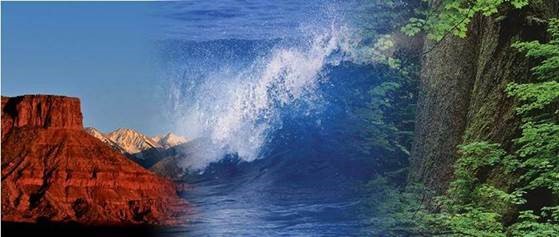
Faculty Publications
Seasonal Variability in the Salinity and Oxygen Isotopic Composition of Seawater from the Cariaco Basin, Venezuela: Implications for Paleosalinity Reconstructions
Document Type
Article
Abstract
Oxygen isotope measurements (d18Ow) were made on seawater samples collected monthly betweenMay 1996 and February 1997 and between December 2005 and May 2006 at various water depths at theCariaco Basin ocean time series station (10o30N, 64o40W). The d18Ow values are compared withconcurrent salinity measurements to assess the d18Ow:salinity relationship in this tropical region and todetermine if significant seasonal variability exists in the relationship. The d18Ow values range from 0.88 to1.19% SMOW in the upper 250 m. Our results indicate that the strongest positive linear correlationbetween d 18Ow and salinity in the upper 250 m occurred during the February and April 2006 upwellingseason (R2 = 0.95 and 0.94, respectively). The salinity: d18Ow relationship displays significant seasonalvariability which is attributed to seasonal changes in freshwater input from the Tuy, Neverı´, and Unarerivers into the Cariaco Basin. Specifically, an inverse correlation (R2 = 0.77) exists between monthlyNeverı´ River discharge and sea surface salinity. Our results demonstrate that significant seasonal changesin the d 18Ow:salinity relationship occur in the tropics. The data also show a distinct difference between thesurface water d18Ow:salinity relationship during the upwelling season (R2 = 0.96) and the nonupwellingseason (R2 = 0.93) revealing zero-salinity end-members of -28.53 (SE ± 3.04) and -8.77 (SE ± 1.33),respectively. The seasonal mixing lines are an important consideration when utilizing the salinity:oxygenisotope relationship for paleosalinity reconstructions. The oxygen isotope composition (d18Oc) was alsomeasured in two surface-dwelling planktonic foraminiferal species, Globigerinoides ruber andGlobigerina bulloides, from biweekly sediment trap samples collected in the Cariaco Basin betweenNovember 1996 and February 1997 and May 2003 through May 2006. The large range in d18Oc during thestudy period, 1.4% for G. ruber and 1.5% for G. bulloides, is attributed to changes in calcification depthsof the species from 1996–1997 to 2005–2006. Using the surface water d18Ow:salinity equations generatedfor the upwelling and nonwelling seasons in the Cariaco Basin, we compare measured seawater salinitywith the calculated seawater salinity at various depths of calcification. The d18Ow:salinity equation generated from surface waters during the upwelling months yields salinity estimates that best agree withmeasured salinities.
Publication Info
Published in Geochemistry, Geophysics, Geosystems, Volume 10, Issue 6, 2009, pages 1-15.
Rights
McConnell, M. C., Thunell, R. C., Lorenzoni, L., Astor, Y., Wright, J. D., & Fairbanks, R. (2009). Seasonal variability in the salinity and oxygen isotopiccomposition of seawater from the Cariaco Basin, Venezuela:Implications for paleosalinity reconstructions. Geochemistry, Geophysics, Geosystems, 10 (6), 1-15.
© Geochemistry, Geophysics, Geosystems 2009, American Geophysical Union

